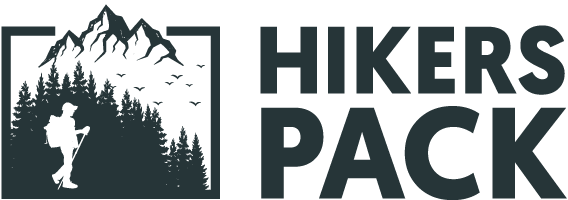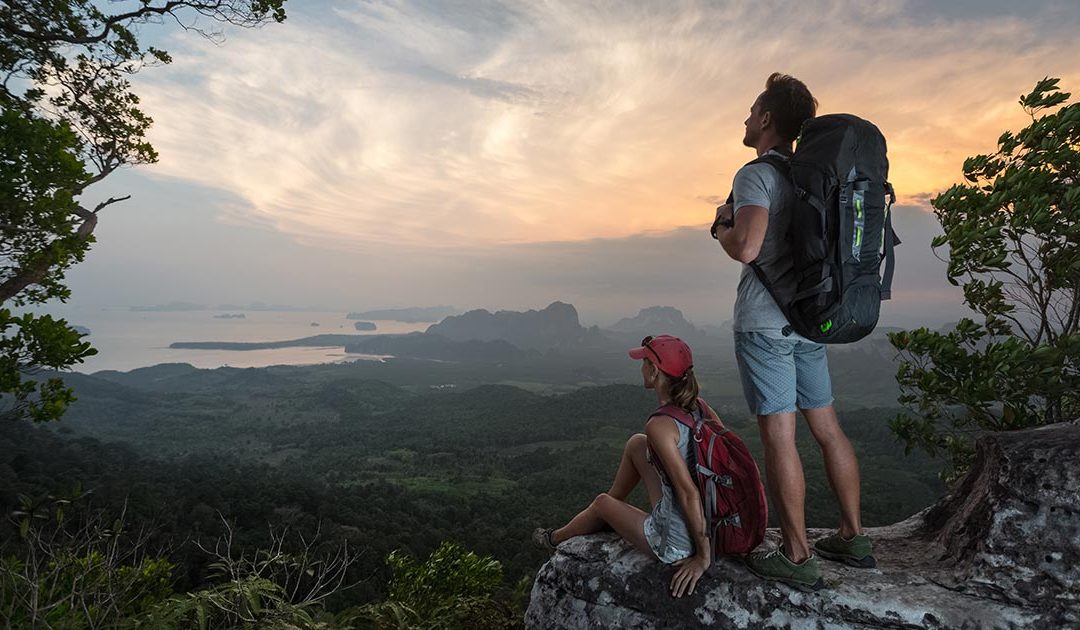There’s nothing like a great sunrise hike to start the day!
But what if your hips or knees hurt? It certainly takes some of the pleasure out of the hike. There are some solutions. But it will require some work on your part.
Do you have knee pain after hiking?
Do you have hip pain after hiking?
Perhaps you have a ball of foot pain while hiking.
Or do you have lower back pain after hiking?
If you’re nodding your head yes to any of the statements/questions from above, read on. Maintaining balanced and flexible hips, knees and ankles are crucial as we age if we want pain-free hiking. Or pain-free anything for that matter. If I’ve learned one thing after more than thirty years as a strength trainer, it’s that we require constant maintenance to run at peak performance. But seriously, doesn’t that apply to everything! And you’re never too young or old to start!
So let’s go over some solutions for a lifetime of comfortable hiking.
What are the four main components of pain-free hiking?
1. Balanced strength
What do I mean by balanced strength? Think of any joint in your body. It’s a fulcrum. If there’s an unequal pull from one side it’s imbalanced. For instance, if your quadriceps are overdeveloped and your hamstrings are underdeveloped, you’ll eventually experience issues in the joints above and below those muscle groups. It’s more finite and complicated, but that should give you a good idea.
2. Flexibility
A pliable muscle is generally a happy muscle. The same applies to the above. If one side of the fulcrum is tight, it will reflect in pain in the joint eventually. Maintaining the flexibility of the larger muscle groups is a fairly easy undertaking.
3. Compression
Compressing muscles to relieve pain is fairly new to the scene. But it has a greater impact than stretching a muscle. It’s also more painful to execute. But, it’s worth it!
4. Cardiovascular conditioning
Yes, this is part of pain-free hiking. I only include this because joint pain seems to be amplified if one’s cardiovascular condition is sub-par. And I hope we all agree that we need to keep our ticker strong!
Strength exercises for hiking
Do these exercises 1-2 times a week depending on your fitness level.
Not everyone goes to a gym. So, I want to incorporate realistic and helpful exercises one can do anywhere. And the exercises below can be performed anywhere using a gallon jug, filled backpack, etc. I used the personal training studio I own and my living room for convenience.
- Front weight step-ups: Do 2 sets of 15-20 and select a weight that becomes difficult by the 12th rep.
- Lateral step-ups: Do 2 sets of 12-15 and select a weight that becomes difficult by the 10th rep or just use your body weight.
- Front weight Bulgarian squats: Do 2 sets of 8-15 and select a weight that becomes difficult by the 6th rep.
- Single leg RDL: Do 3 sets of 6-8 reps and select a weight that becomes difficult by the 4th rep.
- SL Lateral rotation: This is a more complicated movement for the advanced hiker. So, incorporate this if you’ve already been training for some time. Do 2 sets of 6-8 and select a weight that becomes difficult by the 4th rep.
Cloth supine ham curls: Do 2 sets of 8-15 reps with your body weight.
Single foot calf raises off stairs: Do 3 sets of 15-20 with your bodyweight.
These exercises are too simple, how can they help?
Do these “less than common” exercises twice a week after cardio and before stretching.
Clamshells: I find the hip rotors and glute muscles to be underdeveloped in a lot of the population. This simple exercise is a really good bang for the buck. Execute 2-3 sets of 20 reps per side.
Seated, single-leg hip flexion. This is another exercise that can quickly showcase a weakness for which you may not have been aware. Execute 2-3 sets of 8-20 reps per side.
Bird Dog: I know, this one’s weird. But it helps strengthen the muscles that keep your pelvis in the right placement. Hold each position for 10-20 seconds. Do 2-3 sets per side.
Side-lying abduction: No, Jane Fonda did not invent this! It’s a great glute exercise. Just make sure you keep your pelvis completely perpendicular to the floor. Focus to recruit only your glutes. Execute 2-3 sets for 15-20 reps.
Bent knee isometric external rotation against a wall. OK, so this is even weirder. But it really recruits your external hip rotors in a great way! Hold the position for 10-20 seconds and try to push hard against the wall with your knee. Holding a yoga block against the wall is a great tip. Execute 2-3 sets per leg for the 10-20 seconds per hold.
Single leg bridges: This is more common, but still requires balanced strength to execute. Hold each position for 10-20 seconds focusing on a flat/neutral pelvis. Do 2-3 sets.
Flexibility for hiking.
Below is a pictorial list of stretches that are helpful in keeping limber for hiking. Go through the series once at least 3 times a week. Every day before bed or after a workout is even better. Hold each stretch for approximately 30 seconds.
I like to use my stretch time as a forced meditation.
Hamstring specific stretches: From a “global” perspective, if you have lower back pain after hiking, your hamstrings may be tight or weak. Consistently doing these stretches will help.
Hip specific stretches:
Quadriceps/hip flexors specific stretches: Think about how often your hip flexors have to dynamically work during a hike with a lot of changes in elevation. Hip flexor pain hiking? Well, disregarding flexibility and strength in this region can easily lead to hip flexor pain from or during hiking.
Adductor specific stretches:
Calf specific stretches:
When should you stretch?
It’s super important that you warm-up prior to stretching. It can be as simple as jogging in place or after a great hike. The idea is that you’re not necessarily stretching for an event. But rather than you’re stretching consistently enough to already be limber for a hike. Make sense?
That’s why it’s totally cool to stretch after a great hike or even before bed while meditating. That’s what works best for me. But you may be different. In other words, it doesn’t matter when… just do it at some point so you stay limber.
Muscle compression for hiking.
Most everyone has heard of the other fitness components before, but compression is newer to the game. Physical therapy has come a long way and its contribution to fitness has been profound recently. It’s perfectly normal to now see foam rollers and lacrosse balls in gyms for rolling out sore or tight muscles.
Below are a few helpful movements that will help with joint pain. If you have time, execute this right before and/or after hiking. All of these hurt during the compression, but really help right afterward and during the long run.
Spend as much time rolling each group as you like. Or until it feels better.
A foam roller or rolling pin for:
Glutes/rotors
Lateral quadriceps
Anterior quadriceps: As pictured, start with both legs. Then progress to compressing just one at a time. Finally, bend the knee of the compressed leg while rolling. You’ll see why once you do it.
Peroneus muscles
Adductors: This region is often overlooked if you have hip pain after hiking.
Plantar region of the foot: If you’ve ever dealt with hiking foot pain, this offers almost instant relief.
Cardiovascular conditioning for hiking.
Most of my clientele over the years have always preferred strength training over cardiovascular training. The way I see it, they never found a cardiovascular activity they actually enjoyed.
So, what are some of your options?
Actual hiking
Interval training (for example, 30 seconds of sprints followed by 60 seconds of walking and repeat)
Speed hiking inclines
Using a stationary piece of cardiovascular equipment
Trampolene work
Delayed onset muscle soreness (DOMS) from exercise.
If you’re new to any type of exercise or you’re doing something for the first time, there’s a good chance you’ll be sore. Don’t let this scare you away from exercise. It always passes and improves.
On a side note, if you ever work with a personal trainer and their objective is to make you very sore, run away (fast)!
The best way to alleviate soreness aside from staying active is through compression with rollers. You can read more about DOMS (How to Avoid or Recover from Delayed Onset of Muscle Soreness After Working Out?)on my other blog, gymfailedyou.com.
Bottom line
If you take anything away from this article, I hope that it’s the awareness that pain-free joints require maintenance. Yes, that means you have to take the time and put the effort into it. If it’s not a priority, you’ll find it difficult to fit into your day. But seriously, it’s not that hard or time-consuming. And it’s super worthwhile!

